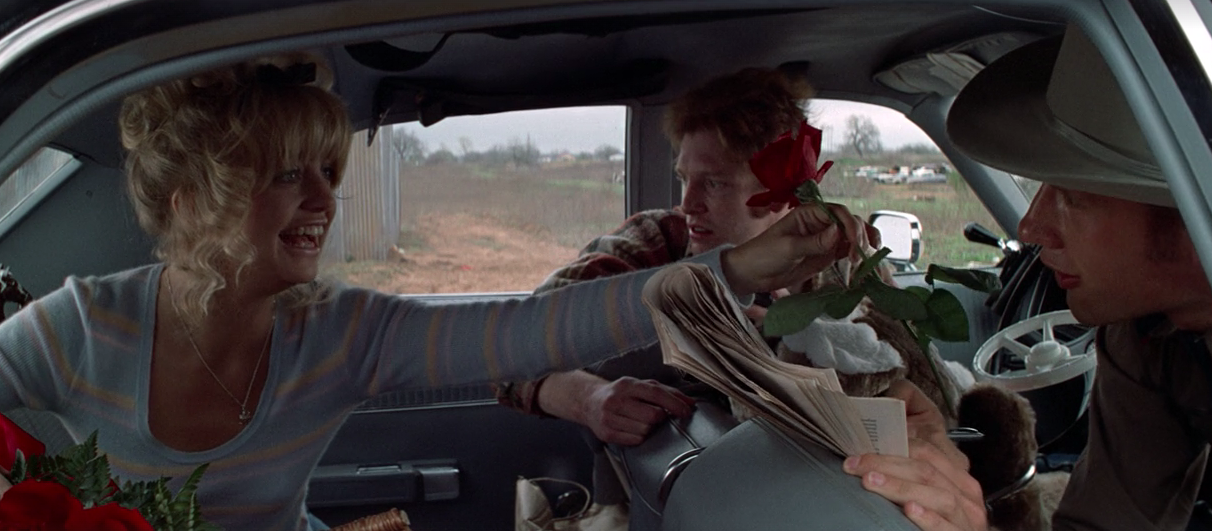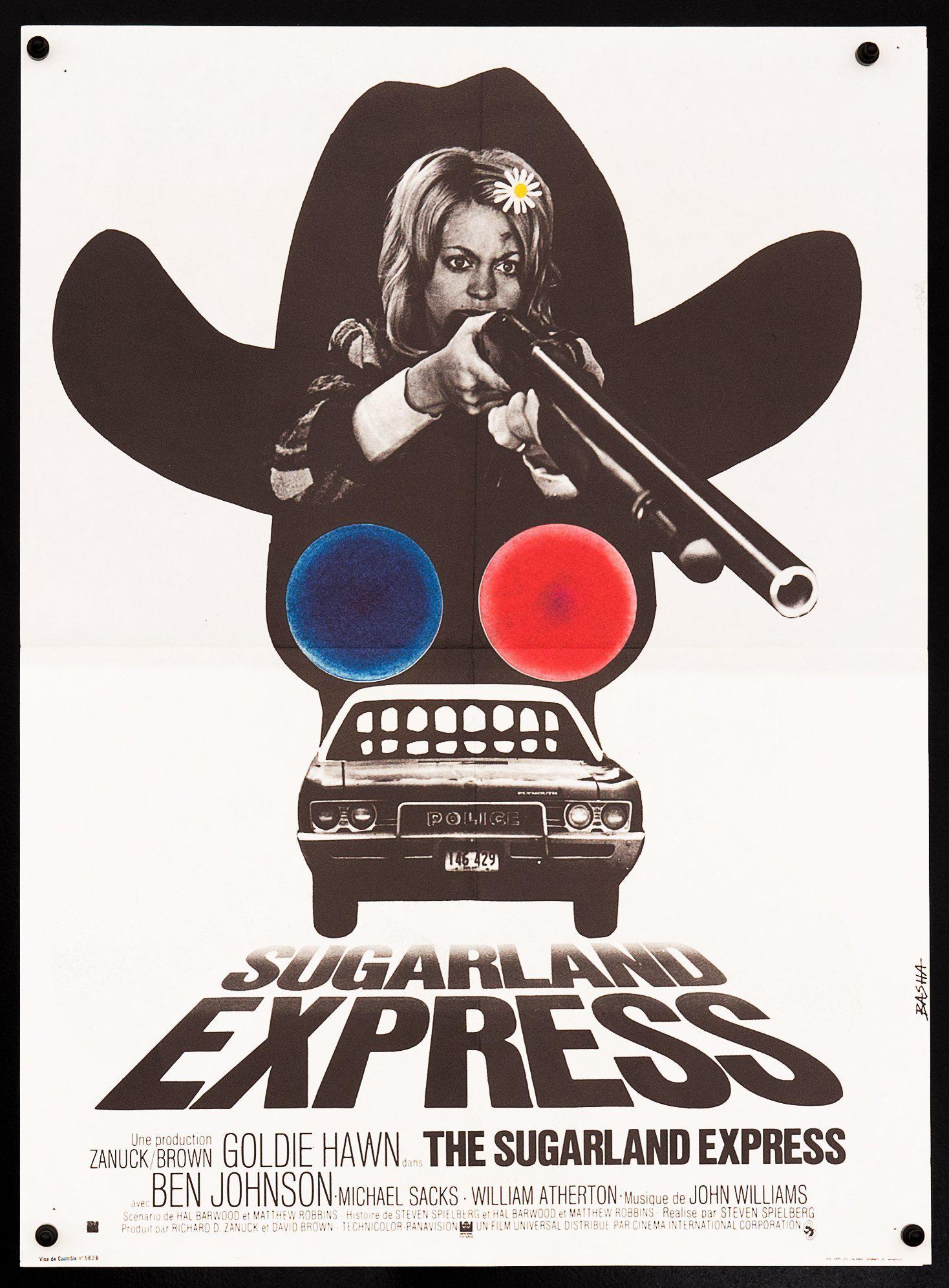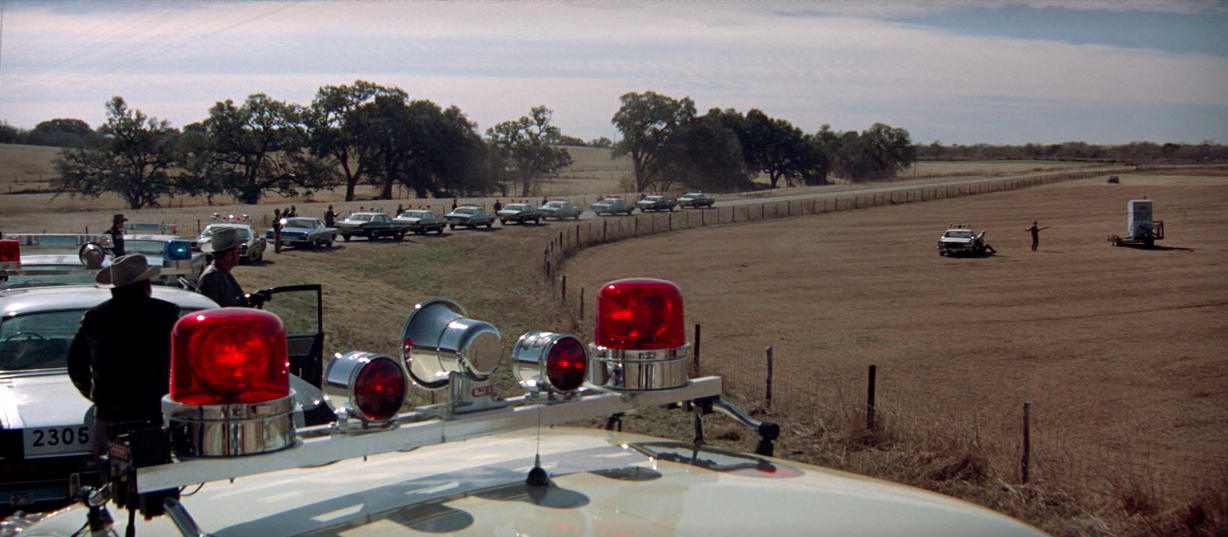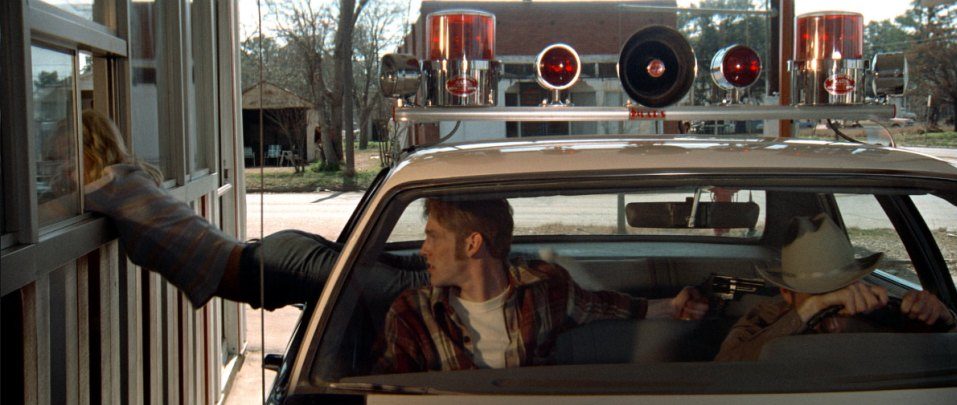

“Ain’t nobody gonna fuss over four little old months.”
If Steven Spielberg had been working with a stronger screenplay, his theatrical debut might have been a bona fide classic. The Sugarland Express finds the twenty-six year old director invested in his chosen genre, comfortable with his cast, in tune with his DP, and confident with his large-scale sets and action sequences. It’s technically brilliant and underscores that Spielberg was a natural born showman. Although it’s largely dissimilar to the main event blockbusters that he became known for—lacking anything like the sharks, aliens, and occult adventures that became his stock-in-trade—it treads in familiar territory with broken family dynamics anchoring the drama. And yet as it meanders in its middle portion, traversing the byways of Dixieland with varying results, the exciting narrative is sapped of a great deal of its momentum. That said, it is still a wildly entertaining picture; one worth seeing for Goldie Hawn’s committed performance, Spielberg’s burgeoning talents, and the gorgeous location shoot from Vilmos Zsigmond.
The film is based on the true story of a married outlaw couple, myopic in their outlook. When the state threatens to take away Lou Jean Poplin’s (Hawn) baby, she visits her incarcerated husband Clovis (William Atherton) at the Texas Department of Corrections’ Pre-release Center—where he’s set to serve a mere four months before he’s free—and busts him out. Clovis knows he’s making a mistake but decides that satisfying his wife’s wild demands is the best course of action. And so he soon finds himself holding up Patrolman Slide (Michael Sacks), commandeering his patrol car, and leading a ballooning caravan of state troopers, FBI agents, amateur vigilantes, press reporters, and admiring news junkies across the state of Texas to the foster home of their government-kidnapped toddler. It has more than a passing resemblance to several golden age classics like Bonnie and Clyde and Badlands and even shades of Spielberg’s earlier made-for-TV movie Duel.

For all the wearing of his influences on his sleeves that Spielberg does in The Sugarland Express, his film has proven influential on the Coen brothers, whose Raising Arizona seems to be informed by the earlier film’s endearing blend of comedy, drama, and action, its chicken-fried Americana aesthetic, and its tale of maternal yearning gone awry. While I think the later film is better, I also believe that Spielberg was undersung by critics of the day who praised his technical wizardry but followed up their commendations with phrases like “shallow,” “impersonal,” “mechanical,” “empty” (reviews from Pauline Kael and Stephen Farber are good examples). It is correct to highlight Spielberg’s evident competence and confidence as a technical filmmaker. Just take a look at the “Spielberg Oner” that opens the film by shifting the frame from a cluster of road signs to a man looting a brokedown car to the film’s protagonist deboarding a Continental Trailways bus. All in the very first shot. Check out the Vertigo dolly zoom, famously used a year later in Jaws, and realize it was already a functional tool in the director’s repertoire as he frames a speeding car from over the shoulder of a sniper. Realize that the The Sugarland Express was the first film to use the compact Panaflex camera from Panavision, allowing Spielberg to execute exciting shots on the open highway. Of course, some of the credit here belongs to Vilmos Zsigmond, a fellow natural, whose lens seems to gravitate toward gorgeous compositions no matter the inherent visual quality of his subject. From conversations inside a vehicle to massive police caravans, from rearview mirrors to Wile E. Coyote reflected off the window of a broken-into RV as our hapless outlaws watch the drive-in screen in silence, Zsigmond’s craftsmanship is impeccable.

And yet to see Spielberg’s film as synthetic misses some of its most crucial elements; elements that would win the director great acclaim when he tuned his product toward mass appeal during his prime. Consider, for instance, how Lou Jean and Clovis bond over their crisis, and how their family expands during the protracted event to include their well-meaning hostage as well as the sentimental old Captain Tanner (Ben Johnson) who treats the pair like rebellious grandchildren. Consider the carnivalesque vision of backcountry America that the director conjures—America as a swath of rural terrain nevertheless crammed with drive-in theaters, used car lots with the owner’s visage blown up on billboards, and restaurants with gigantic neon chickens rotating atop them; brimming with smiling bumpkins who take great joy in living vicariously through the two runaways. Our protagonists come from the same stock as the simple folk who follow their story with great interest, and the way their childish behavior snowballs into an unstoppable process is another consistent Spielbergian theme. These things don’t strike me as lacking substance at all. In fact, they suggest a great deal of thought went into developing the film’s sentimental tone and its sense of place.
The Sugarland Express is often viewed as a sort of warm-up for Spielberg, a pre-Jaws walkthrough of the feature filmmaking process that allowed the director to get his feet under him before coming into his own. I won’t argue that it belongs at the top of the heap. But I would argue that it belongs in the discussion and deserves better than its current footnote status. If it had been directed by someone else, someone who maybe became a recluse after its completion, it might be viewed as some long-lost holy grail of the new wave. Instead, because Spielberg became one of the premiere filmmakers of his generation, it’s viewed as an afterthought. I hope I’ve done my small part in changing that perception.
Sources:
Lightman, Herb A. “Panaflex Camera Debuts on The Sugarland Express”. American Cinematographer. 20 April 2020.